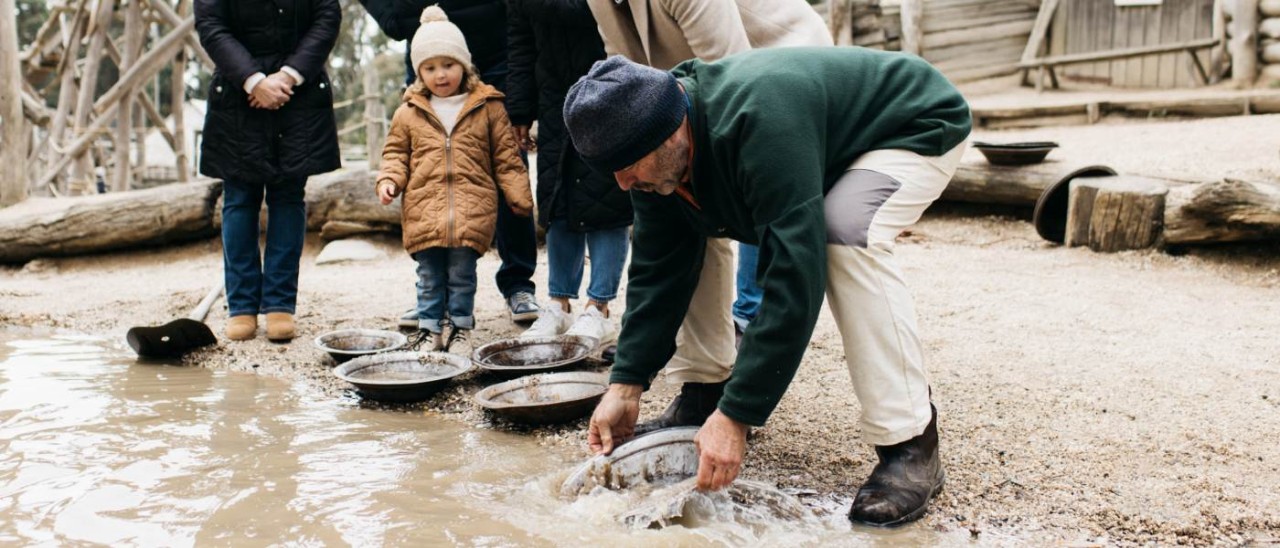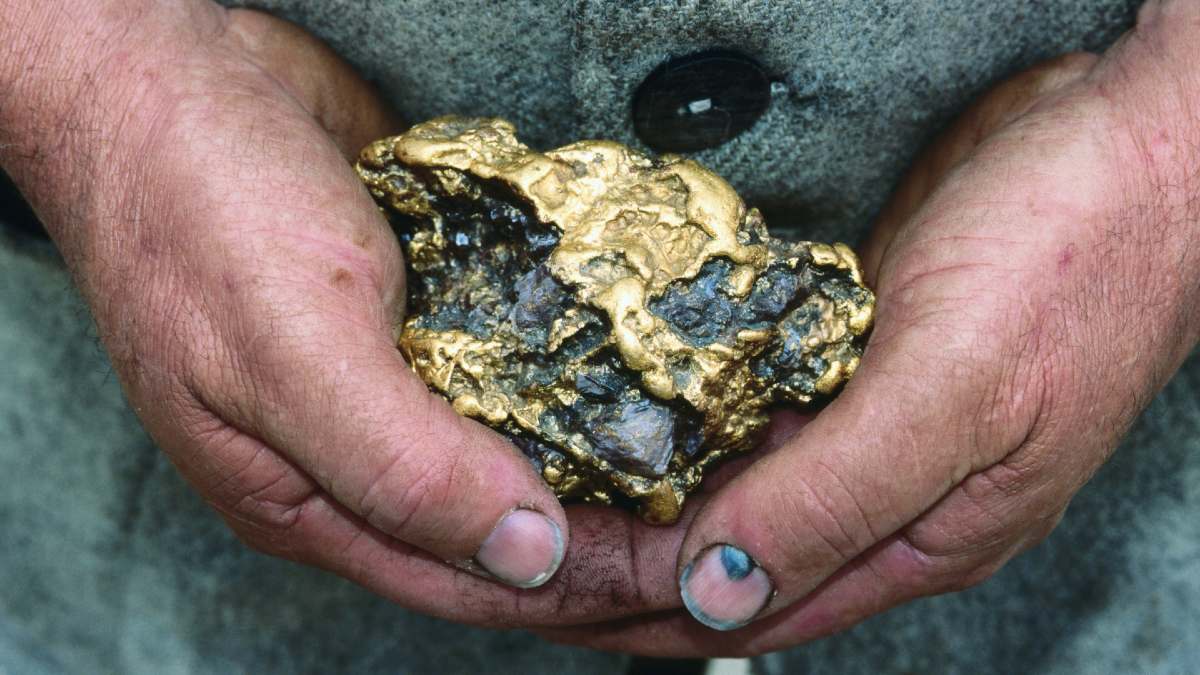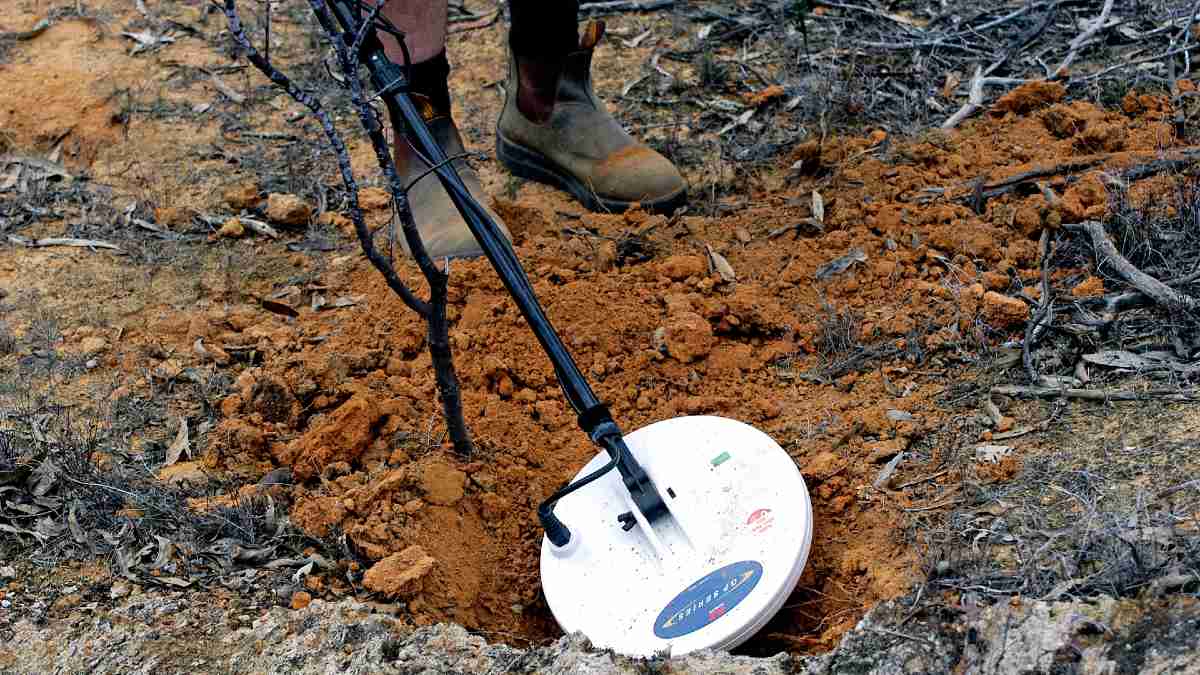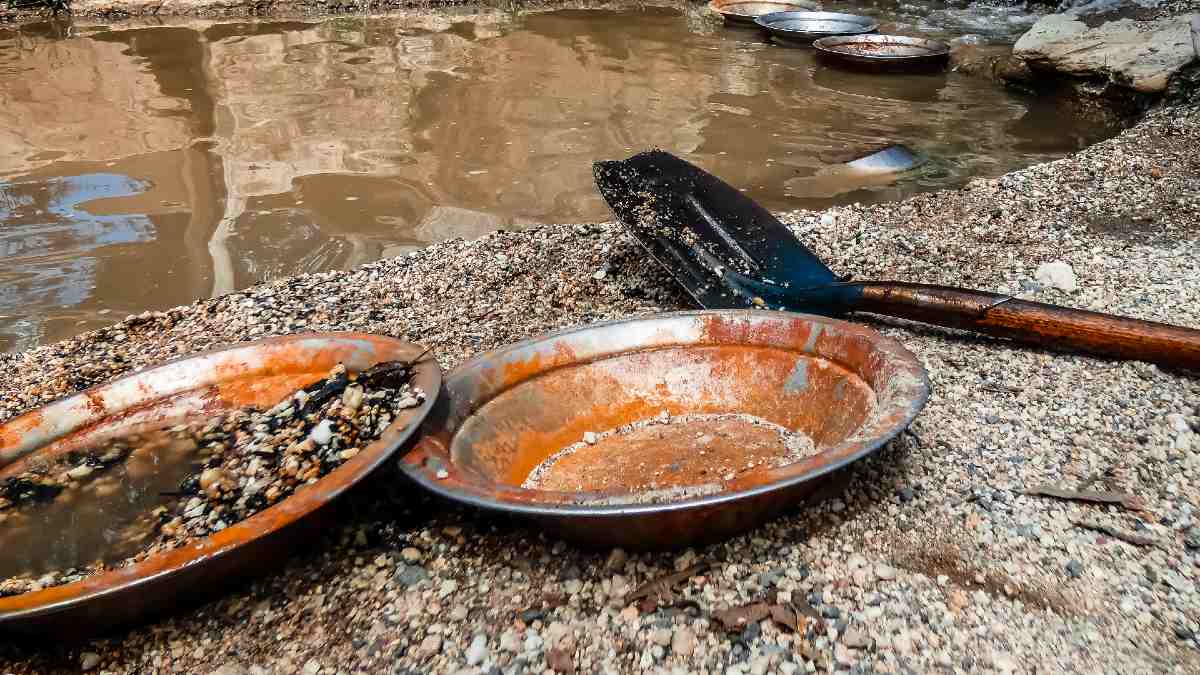From panning for gold at Sovereign Hill to jousting battles at Kryal Castle, there’s plenty to do on a getaway to Ballarat in Victoria.
The best places to find gold in Victoria

Here are the best places to find gold in Victoria, plus practical advice for beginners who want to give fossicking a go.
Victoria is famously known as the birthplace of Australia's 19th-century gold rush. Between 1851 and the 1890s, the discovery of gold transformed the colony almost overnight, turning quiet pastoral towns into bustling boom settlements. Melbourne grew into a wealthy city on the back of gold, and many of the state's regional centres still display this golden heritage in their architecture, museums and landscapes.
While large-scale mining is carried out by professional companies in modern times, recreational fossicking remains a popular pastime. Armed with a pan, shovel or even a metal detector, modern prospectors can still try their luck in the same creeks and gullies that lured thousands in the 1850s.
If you keen to give it a try, gold panning is included in the Sovereign Hill experience. If you want to strike out on your own, you'll need a government permit. Alternatively, you can book an adventure run by a Parks Victoria licensed tour operator. Gold panning can be part of a holiday, too, with accommodation options available throughout the Goldfields region, including Creswick, Ballarat and Bendigo.
More: Great Goldfields experiences for kids and families
A brief history of gold in Victoria
When gold was first found near Clunes in 1851, it triggered one of the world's greatest gold rushes. Within months, prospectors flocked from around the globe, transforming towns like Ballarat, Bendigo, Castlemaine and Beechworth.
At the peak of the rush, Victoria was producing more than a third of the world's gold supply. It also produced many of the world's largest gold nuggets, like the Welcome Stranger found in 1869 in the golden triangle near Moliagul, weighing a whopping 72 kilograms.
While the easy surface nuggets were long ago collected, gold remains in Victoria's soils, rivers and quartz reefs. Many people are still surprised to learn that new gold is uncovered each year, sometimes in remarkable quantities.
In 2013, for example, a Ballarat man unearthed a 5.5kg nugget with a metal detector. On Mothers Day in 2019, a girl tripped on a 624g nugget lying on a path near Bendigo. That same year, a man pocketed $130,000 after digging up a 2kg nugget somewhere near Ballarat. He was so surprised by his good fortune he christened his find 'You Wouldn't Believe It'.
More: Best towns to visit on a trip to Victoria's High Country

Finding gold nuggets may be rare, but it does still happen. Image: Visit Victoria
The best goldfields in Victoria
Fossicking takes you to some of Victoria's most scenic and historic regions. You might spend the morning panning in a creek, then enjoy lunch at a country bakery before exploring a local museum or staying overnight in a heritage hotel. Combining fossicking with camping or caravanning also makes for a great budget-friendly holiday.
Victoria's Golden Triangle
The Golden Triangle of Victoria stretches roughly between Ballarat, Wedderburn, Tarnagulla and Ararat. The region's iron-rich rocks and saline ground water make the perfect geological storm needed to create big nuggets and gold-bearing quartz reefs.
Towns like Dunolly, Maryborough, Avoca and St Arnaud are surrounded by state forests that remain popular with detectorists. Dunolly, sometimes called the Golden Nugget Capital, has been the site of numerous famous finds - including some of the largest gold nuggets ever discovered. Maryborough's forests also remain accessible, with designated camping areas that cater to fossickers.
Ballarat: Sovereign Hill and beyond
Ballarat is arguably the spiritual home of Victoria's gold rush. It was here that the Eureka Rebellion took place in 1854, and its grand 19th-century buildings still speak of gold-era wealth. Sovereign Hill is a must-visit for anyone interested in gold history, with live demonstrations of panning and underground mining tours.
Beyond museum walls, the surrounding bushland still holds gold. Creswick State Forest and Wombat State Forest are popular areas for fossickers, offering creeks and diggings where small nuggets and flakes are often found. Ballarat also hosts detecting clubs and regular fossicking meet-ups, making it an ideal base for beginners.
Bendigo: quartz reefs and old workings
Bendigo was built on quartz reef mining rather than alluvial gold, and its underground network of shafts stretches for hundreds of kilometres. The Central Deborah Gold Mine offers guided tours where visitors can descend into the tunnels once worked by thousands of miners.
For fossickers, Bendigo's regional parks like Whipstick State Park and Greater Bendigo National Park remain productive sites. Gold is usually finer here, often recovered with pans or detectors in gullies. The Bendigo Prospecting Club also runs events for newcomers who want guidance from experienced hobbyists.
More: The best free things to do in Bendigo
Castlemaine & Maldon: historic diggings
Castlemaine and nearby Maldon preserve much of their gold-rush charm, with heritage streetscapes and public gardens built on mining wealth. For fossickers, the area's diggings and watercourses are rewarding. The Vaughan Mineral Springs Reserve, Fryerstown Diggings and Muckleford State Forest are popular sites where panning and detecting are permitted.
Maldon is surrounded by forest where nuggets have been unearthed even in recent decades. The area offers a blend of history, scenery and genuine fossicking opportunity.
Beechworth: gold and bushrangers
Beechworth's history is intertwined with both gold and bushrangers, and the town has preserved many gold-era buildings. The surrounding hills, creeks and diggings remain accessible for prospectors. Reedy Creek near Eldorado is particularly famous as a fossicking location, with panning spots marked out for visitors.
Further afield, the Ovens Valley and Chiltern-Mt Pilot National Park are known for yielding fine alluvial gold. These locations are also rich in birdlife and bushwalking opportunities, making them ideal for trips that combine fossicking with nature exploration.
Daylesford & Hepburn: gold and mineral springs
Daylesford is best known today for its mineral springs and spa culture, but its origins lie in gold. The surrounding Wombat State Forest and Jim Crow Diggings (now known as Mount Franklin Reserve) were once busy rush sites, and small amounts of gold can still be found in the creeks.
Many fossickers enjoy combining a day of gold panning with visits to the region's natural mineral springs, wineries and gourmet food outlets, making Daylesford an appealing destination for both adventurers and those seeking relaxation.
More: The ultimate guide to the Macedon Ranges
Ararat & Stawell: western goldfields
Further west, Ararat and Stawell have long mining histories. The Ararat Goldfields produced massive finds in the 1850s, and fossickers can still pan in areas such as the Mount Cole State Forest.
Stawell is better known today for its underground Stawell Gold Mine, which remains in operation, but the surrounding bushland also provides opportunities for recreational prospecting.
Other notable gold spots in Victoria
Smaller but still notable areas include Warrandyte on Melbourne's fringes, where Victoria's first payable gold was discovered in 1851. Warrandyte State Park has designated fossicking areas, though finds are usually small.
Similarly, Enfield State Park near Ballarat, Kooyoora State Park near Inglewood and Heathcote-Graytown National Park all offer opportunities for those keen to try their luck.

Some gold fossickers prefer to use a metal detector. Image: Getty
Gold fossicking tips for beginners
Licences and regulations
Before you start, you’ll need a miner's right for recreational prospecting in Victoria. This is a permit issued by the Victorian Government that allows you to prospect on designated Crown land, private land (with the owner's permission), and some state forests and reserves. It currently costs just over $28 and is valid for 10 years, making it one of the most affordable adventure licences in Australia.
There are rules to follow: you must only use hand tools like metal detectors, pans and sluices; avoid digging in protected zones such as historic sites; and fill in any holes you create. Fossicking is generally prohibited in national parks, except for specific designated areas like Reedy Creek at Eldorado. Always check local regulations before heading out.
Tools and equipment
For beginners, gold panning is the simplest method. All you need is:
- a gold pan (usually plastic, with riffles to trap gold)
- a small shovel or trowel
- a classifier or sieve to remove larger rocks
- a snuffer bottle to collect fine gold.
For those wanting a more advanced experience, metal detectors are popular. Entry-level detectors start around a few hundred dollars, while high-end models used by serious prospectors can cost several thousand. If you're unsure, many regional towns have hire shops where you can rent equipment for a day or weekend.
Choosing a fossicking spot
Successful fossicking often comes down to research. Study old mining maps, talk to local clubs and look for signs of historic diggings such as mullock heaps, old shafts and water races. Creeks with bends, inside edges and gravel bars are prime panning spots, as gold tends to settle in low-flow areas.
Techniques for goldpanning
- Fill your pan with gravel and sand from a likely spot.
- Submerge it in water and gently shake to settle heavy material at the bottom.
- Tilt and swirl to wash away lighter material, allowing the heavier gold to remain.
- Repeat until you are left with black sand and, hopefully, a few shiny flecks.
Metal detecting tips
When using a metal detector, patience and persistence are key. Work slowly, overlap your sweeps, and listen carefully for faint signals. Gold often hides under layers of soil or near ironstone, so dig for even uncertain signals. Carry a magnet to help isolate your targets.
Safety and etiquette
Fossicking is generally safe, but remember never to enter old mine shafts. They are unstable and dangerous. Let someone know your plans before heading into remote areas and carry enough water and supplies for yourself. In hot weather, wear sunscreen and protective clothing.
Finally, make sure to respect the environment by leaving no trace and refilling any holes.
Joining a club
Victoria is home to numerous prospecting clubs that welcome newcomers. Joining a club can provide access to shared knowledge, training days, social events and organised trips. It's also a great way to connect with like-minded enthusiasts.

You'll need a few tools to fossick for gold in Victoria. Image: Getty
The chances of striking it rich
It's worth keeping gold fossicking expectations realistic. While it's still possible to find nuggets, most fossickers come away with small specks or flakes. The real reward is often the adventure itself: spending time in nature, learning about history and experiencing the excitement of discovery.
That said, Victoria continues to produce occasional major finds. These rare discoveries prove that the gold is still out there, waiting for those with patience and persistence.


